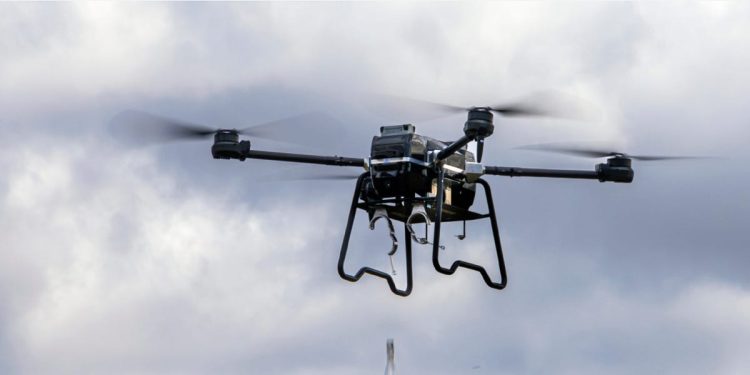- Russia is preparing to build a factory in Bélarus which can make up to 100,000 drones per year.
- Moscow said the factory would bring “effective security” to Minsk, but hadn’t said if it was for weapons.
- Russia aims to build millions of drones each year, but a Bélarus factory brings NATO production closer.
Bélarus said Thursday that it was open to the organization of a Russian factory that can build up to 100,000 drones each year, expanding Moscow production at NATO.
The Russian representatives, including Maxim Oreshkin – The Deputy Chief of the Kremlin’s Deputy Staff – proposed the idea during an Drone exhibition in Minsk on Thursday.
“It’s a huge prospect for us,” said Belarusian chef Aleksander Lukashenko, who attended the event with Oreshkin, in a statement from his office.
Belarusian exposure officials said the factory initially builds 2,000 drones for agriculture and other logistics.
Although Oreshkin did not explicitly say that the factory would also be used to build military drones, he said that this would bring “effective security” to Bélarus.
“It is of course a question of ensuring sovereignty,” Oreshkin told Belarusian state media.
Lukashenko said Bélarus would consult drone specialists in April and May but did not specify when the factory should finish construction.
Russia said in September that it was already able to build 1.4 million drones per year, but that official production has been deeply concentrated in its territory in fields such as Tatarstan. Some groups of Russian volunteers also provide cheaper drones to their troops.
A Belarus factory would expand official production to a nation limiting Poland, Lithuania and Latvia. All three are NATO members who seek to rapidly increase defense spending while concerns are on an increased Russian threat.
These efforts also include drone production on their side: Poland, Lithuania and Latvia are part of a European coalition of six nations which plans to build a “drone wall” to control their eastern borders.
The rest of the world is also locked in an arms race to increase the capacity of drones, and Russia and Ukraine were at the forefront. The two say they want to build 3 to 4 million drones each in 2025.
However, military drones can vary in size and function, and we do not know what type of drone Bélarus intends to help in manufacturing. The Kremlin, for example, relied on long -range Iranian drones to harass Ukrainian cities.
At the same time, war has seen the strong ascent of commercial drones equipped with explosives, which serve as a cheap, deadly and precise means of attacking troops and precious equipment.
Regular Air Force reports of Ukraine say that it generally deals about 1,000 Russian drones – a mixture of first -person shaheds, drones and recognition drones – a week.
Bélarus already hosts several major Russian capacities, including tactical nuclear weapons and advanced air defense systems. In 2022, Moscow’s troops used the country to park part of its invasion force to attack the northern border of Ukraine.
The press services for the Ministries of Defense of Poland, Lithuania and Latvia did not respond to requests for comments sent outside regular work hours by Business Insider.
businessinsider


